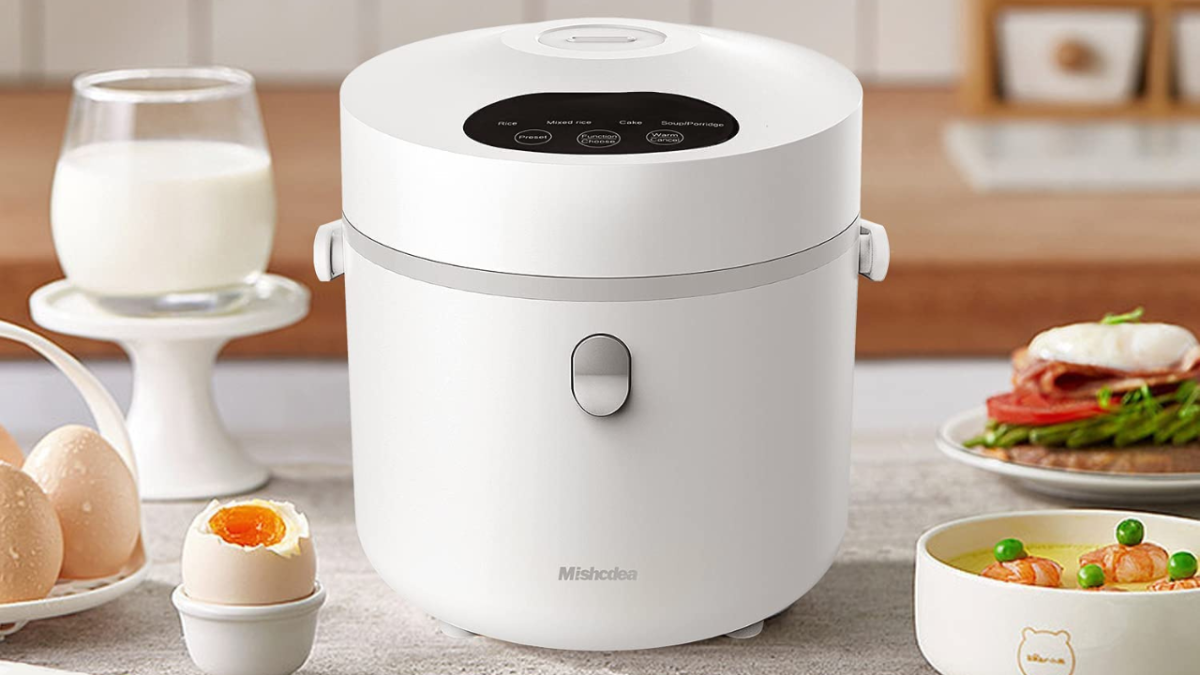

Articles
How To Use A Small Rice Cooker
Modified: February 29, 2024
Learn how to make delicious rice dishes with a small rice cooker through these informative articles. Perfect for beginners and those looking for convenient cooking options.
(Many of the links in this article redirect to a specific reviewed product. Your purchase of these products through affiliate links helps to generate commission for Storables.com, at no extra cost. Learn more)
Introduction
Welcome to the world of small rice cookers! These compact yet powerful kitchen appliances are designed to make cooking rice a breeze, whether you’re cooking for yourself or a small family. If you love rice and want a hassle-free way to prepare it, a small rice cooker is a must-have addition to your kitchen.
Small rice cookers are perfect for those with limited counter space or those who prefer to cook smaller portions of rice. They are also energy-efficient, taking up less power than their larger counterparts. But don’t be fooled by their size – these little wonders can still cook rice to perfection, producing fluffy, delicious results every time.
However, using a small rice cooker may require a slightly different approach compared to larger models. In this article, we will guide you through the process of using a small rice cooker effectively, from choosing the right one to cleaning and maintenance tips. So, let’s dive in and discover the secrets to mastering the art of cooking rice with a small rice cooker!
Key Takeaways:
- Master the art of cooking perfect, fluffy rice with a small rice cooker by choosing the right model, measuring the rice and water ratio, and adding creative ingredients for flavorful results.
- Keep your small rice cooker in top condition and elevate your rice cooking game with tips for optimal results, from experimenting with ratios to enhancing flavors and maintaining your appliance.
Read more: How To Use The Rice Cooker
Choosing the Right Small Rice Cooker
When it comes to choosing a small rice cooker, there are a few key factors to consider. These factors will ensure that you find the perfect rice cooker that suits your needs and preferences. Here are some things to keep in mind:
- Capacity: Since you’re looking for a small rice cooker, it’s essential to consider the capacity. Think about how many people you typically cook for and how much rice you usually consume. Small rice cookers typically have a capacity of around 1 to 3 cups of cooked rice. Choose a size that fits your requirements.
- Features: While small rice cookers may not have as many advanced features as larger models, there are still some key features to look out for. Consider whether you want basic functions like cooking rice and keeping it warm or if you prefer additional features like a steaming function or a delay timer.
- Quality and Durability: It’s important to invest in a rice cooker that is well-built and durable. Look for one made from high-quality materials that can withstand regular use. Reading customer reviews and checking the reputation of the brand can give you a good idea of the quality and durability.
- Ease of Use: A small rice cooker should be user-friendly and easy to operate. Look for models with simple controls and intuitive interfaces. Additionally, features like a non-stick inner pot and easy-to-clean parts can make your cooking experience more convenient.
- Price: Set a budget for yourself and find a small rice cooker that fits within that range. Remember, price doesn’t always indicate quality, so do thorough research to ensure you’re getting the best value for your money.
Once you’ve considered these factors, you’ll be well-equipped to choose the perfect small rice cooker for your needs. Take your time to compare different models and read reviews to make an informed decision. And remember, investing in a quality rice cooker will result in delicious, perfectly cooked rice for years to come!
Preparing Your Rice
Before you start cooking your rice in the small rice cooker, it’s important to give it a thorough rinse. This helps remove any excess starch and impurities from the grains, resulting in fluffier and tastier rice. Follow these steps to properly prepare your rice:
- Measure the Desired Amount: Determine how much rice you want to cook and measure the appropriate amount. Remember, the measuring cup provided with the rice cooker is specifically designed for measuring rice, so be sure to use it for accurate measurements.
- Rinse the Rice: Place the measured rice in a sieve or colander and rinse it under cold water. Gently rub the grains together with your hands to remove any dirt or debris. Continue rinsing until the water runs clear.
- Soak the Rice (Optional): Some types of rice, such as jasmine or basmati, benefit from soaking before cooking. Soaking helps soften the grains and can result in a more even texture. If you choose to soak the rice, place it in a separate bowl, cover it with water, and let it soak for 15-30 minutes. Drain the soaked rice before cooking.
- Drying the Rice (Optional): After rinsing the rice, you can choose to let it dry for a few minutes before cooking. This step is optional but can help improve the texture of the rice by allowing the grains to separate more easily.
Following these steps will ensure that your rice is clean and ready to be cooked in the small rice cooker. Remember to adjust the water ratio accordingly if you choose to soak or dry the rice before cooking. Now that your rice is prepared, let’s move on to the next step – measuring the rice and water ratio in the small rice cooker!
Measuring the Rice and Water Ratio
Getting the rice-to-water ratio right is crucial for perfectly cooked rice in your small rice cooker. While the specific ratio may vary depending on the type of rice you’re using, a general guideline is to use a 1:1.5 ratio of rice to water. Here’s how you can measure the rice and water for optimal results:
- Use the Provided Measuring Cup: Most small rice cookers come with a measuring cup specifically designed for measuring rice. Use this cup to measure the desired amount of rice.
- Add the Rice to the Cooker: Once you’ve measured the rice, add it to the inner pot of the rice cooker. Spread it evenly in a single layer for even cooking.
- Measure the Water: Using the same measuring cup, add water to the rice cooker. As a general rule, use 1.5 times the amount of water to the amount of rice. For example, if you measured 1 cup of rice, add 1.5 cups of water.
- Adjust for Different Rice Types: Different types of rice may require slightly different water ratios. For example, long-grain rice like basmati or jasmine may require a bit less water, while short-grain rice may need a little more water. Adjust the water ratio according to the specific rice variety you’re using or follow the instructions on the rice package for best results.
Keep in mind that the rice cooker’s measuring cup may not be the same as a standard measuring cup used for cooking. It’s essential to use the provided measuring cup to ensure accurate measurements and achieve the desired texture and consistency of the rice.
Once you’ve measured the rice and water, you’re one step closer to enjoying perfectly cooked rice in your small rice cooker. Next, we’ll explore how to add other ingredients to enhance the flavor and texture of your rice dishes.
Adding Other Ingredients
While rice alone can be delicious, adding other ingredients can elevate the flavor and texture of your rice dishes. Whether you’re looking to make a simple side dish or a flavorful one-pot meal, here are some options for adding ingredients to your small rice cooker:
- Vegetables: Adding vegetables to your rice can bring color, nutrients, and added flavor. Options like diced carrots, peas, corn, bell peppers, or mushrooms can be added directly to the rice cooker before cooking. Make sure to cut the vegetables into small, uniform pieces for even cooking.
- Protein: If you want to make a complete meal, consider adding protein to your rice cooker. You can add diced chicken, shrimp, tofu, or cooked sausage to the rice cooker along with the rice. This way, the protein will cook simultaneously with the rice and absorb all the delicious flavors.
- Herbs and Spices: To enhance the taste of your rice, try adding herbs and spices. Fresh herbs like cilantro, parsley, or basil can be added before cooking or used as a garnish after cooking. Spices like turmeric, cumin, or paprika can be added to the rice and water mixture for additional flavor.
- Broth or Stock: Instead of using plain water, you can infuse your rice with extra flavor by using broth or stock. Replace part or all of the water with vegetable, chicken, or beef broth to add richness and depth to your rice dishes.
- Sauces and Seasonings: Adding sauces or seasonings to your rice can transform it into a tasty side dish. Consider adding soy sauce, teriyaki sauce, oyster sauce, or your favorite seasonings to enhance the flavor. Remember to adjust the saltiness of your dish accordingly if using sauces with high sodium content.
When adding other ingredients to your small rice cooker, keep in mind that they may affect the cooking time and water absorption of the rice. Make sure to adjust the cooking settings and water quantity accordingly to achieve a perfectly cooked result.
Experiment with different combinations of ingredients to discover your favorite rice cooker recipes. Get creative and make your rice dishes truly unique and flavorful. Now that you know how to add other ingredients, it’s time to set the cooking time and function on your small rice cooker.
Read also: 14 Superior Aroma Rice Cooker Small For 2024
Setting the Cooking Time and Function
Setting the cooking time and function on your small rice cooker is an important step to ensure that your rice is cooked to perfection. While most small rice cookers have preset settings, it’s still essential to understand how to adjust them based on your preferences and the specific type of rice you’re cooking. Here’s how to set the cooking time and function:
- Read the Instruction Manual: Start by familiarizing yourself with the manufacturer’s instructions for your specific rice cooker model. The manual will provide detailed information on the available cooking functions and recommended cooking times for different types of rice.
- Select the Cooking Function: Small rice cookers typically have different cooking functions, such as white rice, brown rice, quick cook, or steam. Choose the appropriate cooking function based on the type of rice you’re cooking. For example, if you’re cooking white rice, select the white rice setting.
- Adjust the Cooking Time: Depending on the desired texture and consistency of your rice, you may need to adjust the cooking time. Some rice cookers have a default cooking time, but you can increase or decrease it based on your preference. Typically, the longer the cooking time, the softer the rice will be.
- Allow for Natural or Quick Release: Some rice cookers have a built-in pressure release valve or a natural release function. Follow the instructions in the manual to release the pressure once the cooking time is complete. This step is crucial to prevent overcooking or undercooking the rice.
- Keep Warm Function: Once the rice has finished cooking, most small rice cookers will automatically switch to a “keep warm” function. This feature keeps the rice warm and ready to serve for an extended period without overcooking it.
Each rice cooker may have slight variations in terms of settings and functions, so it’s essential to refer to the user manual for specific instructions. Additionally, always take into account the type of rice you’re cooking, as different types require different cooking times and water absorption.
By understanding how to set the cooking time and function on your small rice cooker, you can ensure that your rice is cooked precisely to your liking. Now that you’re familiar with the cooking process, let’s move on to the next step – cooking the rice!
When using a small rice cooker, make sure to measure the rice and water accurately according to the cooker’s instructions to ensure perfectly cooked rice every time.
Cooking the Rice
Now that you’ve prepared your rice, measured the rice-to-water ratio, added any additional ingredients, and set the cooking time and function on your small rice cooker, it’s time to start the cooking process. Follow these steps to cook your rice to perfection:
- Place the Inner Pot: Insert the inner pot into the rice cooker and make sure it’s securely in place.
- Close the Lid: Close the lid of the rice cooker, ensuring it’s tightly sealed to trap the steam inside.
- Start the Cooking Process: Depending on your rice cooker model, press the appropriate button or switch to begin the cooking process. The cooking indicator light may turn on to indicate that the rice is being cooked.
- Wait for the Cooking Cycle to Complete: Be patient and allow the rice cooker to complete the cooking cycle. Avoid opening the lid during the cooking process, as this can affect the cooking time and result in unevenly cooked rice.
- Let the Rice Rest: Once the cooking cycle is completed, allow the rice to rest for a few minutes. This resting period allows the steam to distribute evenly and helps ensure fluffier rice.
It’s important to note that the cooking time may vary depending on the type of rice, the quantity being cooked, and the specific rice cooker you’re using. Always refer to the instruction manual for the recommended cooking time for different types of rice and adjust as needed.
As tempting as it may be, avoid lifting the lid or stirring the rice during the cooking process. These actions can disrupt the cooking process and result in unevenly cooked rice. Trust the rice cooker to do its job and deliver perfectly cooked rice.
Once the rice has rested, it’s time to fluff it up and serve it. Let’s move on to the next step – fluffing and serving the rice!
Fluffing and Serving the Rice
After the rice has finished cooking and resting in the small rice cooker, it’s time to fluff it up and get ready to serve. Follow these steps to achieve light and fluffy rice:
- Unplug the Rice Cooker: Before handling the rice, make sure to unplug the rice cooker for safety.
- Open the Lid: Carefully open the lid of the rice cooker, being mindful of the hot steam that may escape.
- Fluff with a Fork: Use a fork or rice paddle to gently fluff the rice. Insert the fork or paddle into the rice and gently lift and loosen the grains. This process helps separate the grains and prevents them from clumping together.
- Allow Steam to Escape: Let the rice sit uncovered for a few minutes to allow any excess steam to escape. This will further contribute to the light and fluffy texture of the rice.
Once you’ve fluffed up the rice, it’s time for the most enjoyable part – serving and enjoying your delicious creation! Use a rice paddle or a spoon to transfer the rice to serving bowls or plates.
Rice is a versatile staple that can be enjoyed on its own or paired with a variety of dishes. Whether you’re serving it alongside stir-fries, curries, or grilled meats, the fluffy rice will complement your meal perfectly. Garnish with fresh herbs or sprinkle with sesame seeds for an added touch of flavor and visual appeal.
Remember to handle the rice with care, as it will be hot. Allow it to cool slightly before digging in and savoring the satisfying taste and texture of well-cooked rice.
Now that you have mastered fluffing and serving the rice, let’s move on to the essential topic of cleaning and maintaining your small rice cooker.
Cleaning and Maintenance of the Rice Cooker
To ensure the longevity of your small rice cooker and the quality of your cooked rice, proper cleaning and maintenance are essential. Follow these tips to keep your rice cooker clean and in good working condition:
- Unplug and Allow to Cool: Before cleaning your rice cooker, make sure it is unplugged from the power source and has completely cooled down.
- Remove and Clean Removable Parts: Take out the inner pot, lid, and any other removable parts of the rice cooker. Wash them with warm, soapy water, ensuring thorough cleaning of all surfaces. Rinse them well and allow them to air dry fully before reassembling.
- Clean the Exterior: Wipe down the exterior of the rice cooker with a damp cloth and mild detergent. Avoid using abrasive cleaners or harsh chemicals that could damage the surface. Dry the exterior thoroughly to prevent any moisture buildup.
- Remove Food Residue: If there is any stuck-on food residue on the inner pot or other parts, consider soaking them in warm, soapy water for a while to help loosen it. Use a gentle scrub brush or sponge to remove the residue, avoiding any abrasive materials that could scratch the surfaces.
- Regular Descaling: Over time, mineral deposits can accumulate inside the rice cooker, affecting its performance. Descaling the rice cooker periodically is important. You can use a mixture of vinegar and water or a descaling solution recommended by the manufacturer. Follow the instructions for descaling in the user manual.
- Store Properly: When not in use, store your small rice cooker in a clean and dry location. Make sure all parts are completely dry before storing to prevent any moisture-related issues.
- Follow Maintenance Instructions: Refer to the manufacturer’s instructions for any specific maintenance steps recommended for your particular rice cooker model. This may include tasks like replacing the sealing ring or other parts at regular intervals.
Regular cleaning and maintenance of your rice cooker will not only keep it in good condition but also ensure that your cooked rice tastes fresh and delicious. By following these simple steps, you can enjoy perfectly cooked rice for many years to come.
Now that you know how to clean and maintain your rice cooker, let’s explore some additional tips and tricks for achieving optimal results when cooking rice.
Tips and Tricks for Optimal Rice Cooking
To elevate your rice cooking game and achieve the best results with your small rice cooker, consider these tips and tricks:
- Use High-Quality Rice: The quality of the rice you use will significantly impact the final result. Opt for good-quality rice, preferably from reputable brands, for the best flavor and texture.
- Soak Rice for Better Texture (Optional): If you prefer a softer texture or if you’re using certain types of rice like jasmine or basmati, consider soaking the rice before cooking. This will help the grains to absorb water evenly and produce fluffy results.
- Experiment with Ratios: While the general guideline is to use a 1:1.5 ratio of rice to water, feel free to adjust the ratio based on personal preference and the type of rice you’re using. Some people prefer their rice drier, while others like it more moist.
- Let the Rice Rest: After the cooking cycle is complete, resist the temptation to dig into the rice immediately. Allowing the rice to rest for 5-10 minutes after cooking helps to redistribute moisture and results in a better texture.
- Avoid Opening the Lid: While the rice is cooking, try not to open the lid frequently. Opening the lid can disrupt the cooking process and result in unevenly cooked rice. Trust the rice cooker to do its job and maintain the temperature and moisture inside.
- Experiment with Flavors: Rice is a blank canvas that can be easily infused with different flavors. Consider adding spices, herbs, or broth to the rice cooker for added taste and aroma. Don’t be afraid to get creative and try different combinations.
- Adjust Cooking Time for Different Rice Types: Different types of rice have varying cooking times. Brown rice typically takes longer to cook compared to white rice. Consult the instructions or refer to the manual for recommended cooking times for different rice varieties.
- Keep the Rice Warm: If you’re not serving the rice immediately after cooking, keep it warm in the rice cooker’s “keep warm” function. However, try not to leave the rice on the warm setting for too long, as it can eventually dry out.
- Clean the Rice Cooker Regularly: Regular cleaning is crucial for maintaining the performance and longevity of your rice cooker. Clean the removable parts after each use and descale the cooker as recommended to prevent buildup and ensure optimal functioning.
By implementing these tips and tricks, you can enhance the quality and taste of your cooked rice using your small rice cooker. Enjoy experimenting with flavors and techniques to create delicious rice dishes that will impress your family and friends.
Now that you’re armed with these valuable tips, go forth and conquer the art of rice cooking with your small rice cooker!
If you have any further questions or need additional assistance, feel free to reach out. Happy rice cooking!
Conclusion
Congratulations! You have now learned how to make the most of your small rice cooker and cook delicious rice with ease. By following the steps outlined in this article, you will be able to prepare fluffy, perfectly cooked rice every time. From choosing the right small rice cooker to measuring the rice and water ratio, adding additional ingredients, setting the cooking time and function, and fluffing and serving the rice, each step plays a crucial role in achieving optimal results.
Remember to experiment with different types of rice, flavors, and ingredients to create a variety of rice dishes that suit your taste preferences. Whether you’re cooking a simple side dish or a flavorful one-pot meal, your small rice cooker will be your trusted kitchen companion.
Don’t forget to regularly clean and maintain your rice cooker to keep it in excellent condition and ensure the longevity of its performance. By following the cleaning and maintenance tips provided, you can enjoy years of hassle-free rice cooking.
Lastly, keep in mind the tips and tricks shared to enhance your rice cooking skills. Adjusting the rice-to-water ratio, allowing the rice to rest, avoiding unnecessary lid opening, and experimenting with flavors will take your rice dishes to the next level.
With your newfound knowledge and expertise in using a small rice cooker, you are now ready to impress friends, family, and yourself with deliciously fluffy rice. Embrace the versatility of rice and get creative with your recipes. Whether you’re serving it as a side dish or incorporating it into your favorite meals, the possibilities are endless.
Thank you for joining us on this rice cooking journey. We hope you find joy and satisfaction in using your small rice cooker to create culinary delights. Happy cooking!
Frequently Asked Questions about How To Use A Small Rice Cooker
Was this page helpful?
At Storables.com, we guarantee accurate and reliable information. Our content, validated by Expert Board Contributors, is crafted following stringent Editorial Policies. We're committed to providing you with well-researched, expert-backed insights for all your informational needs.
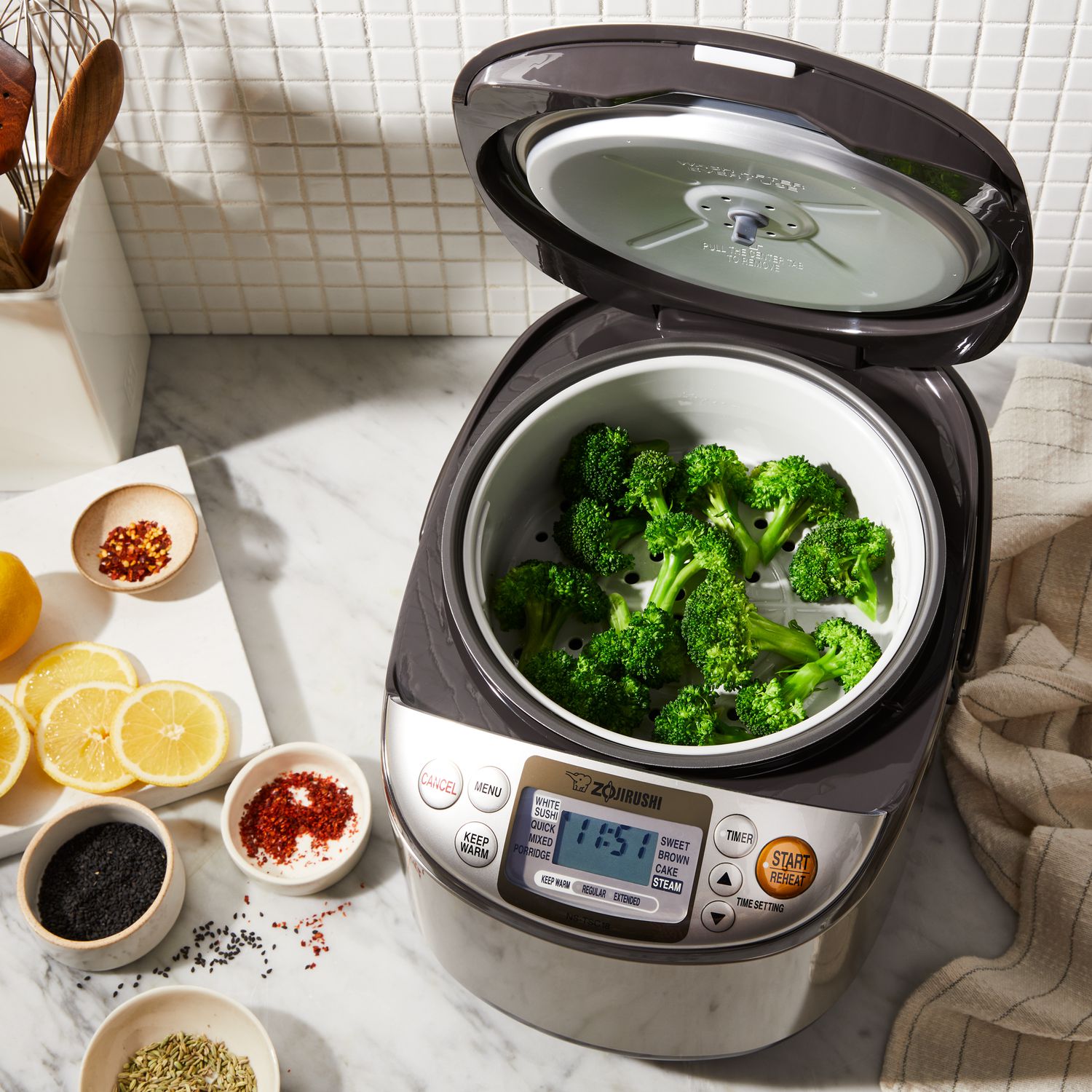
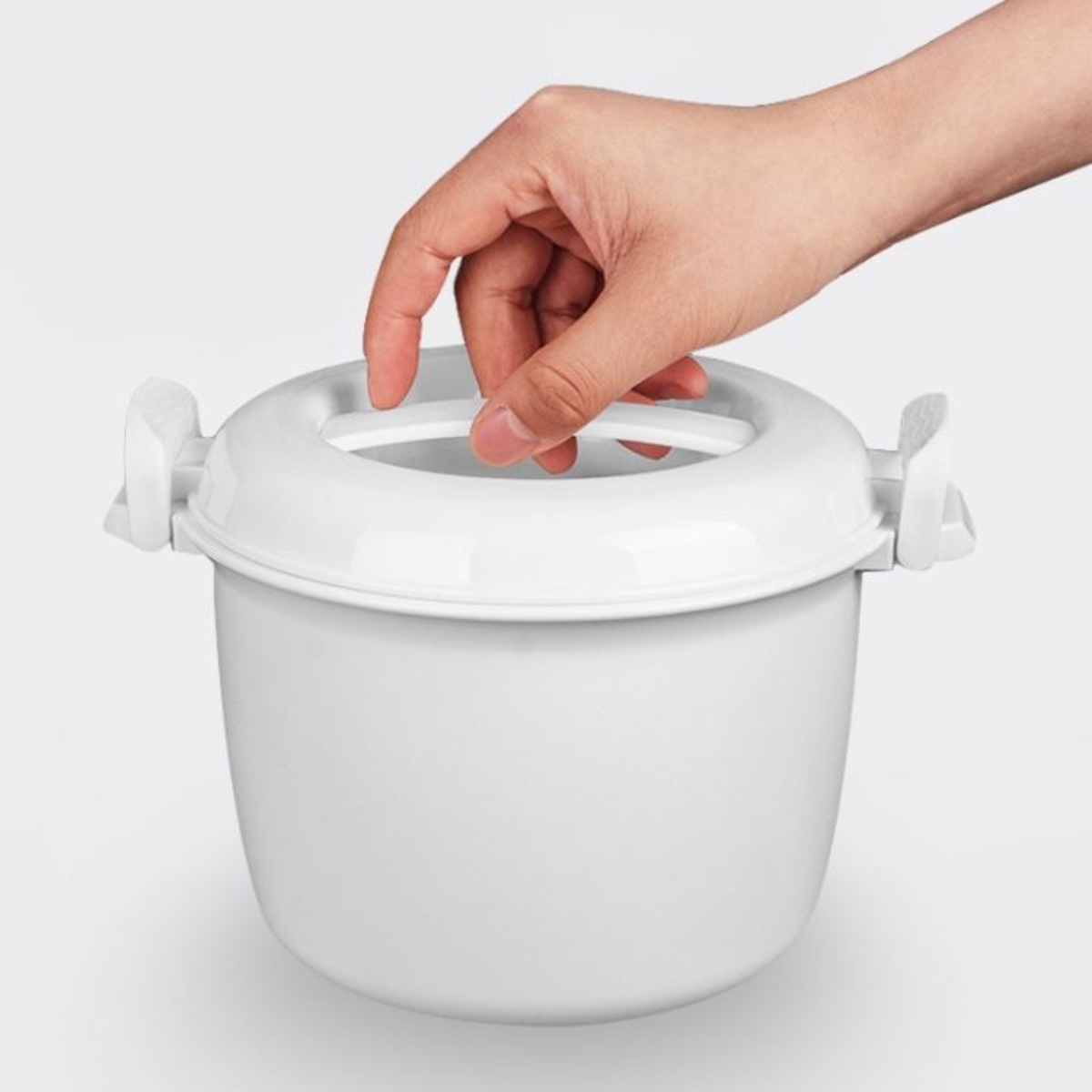
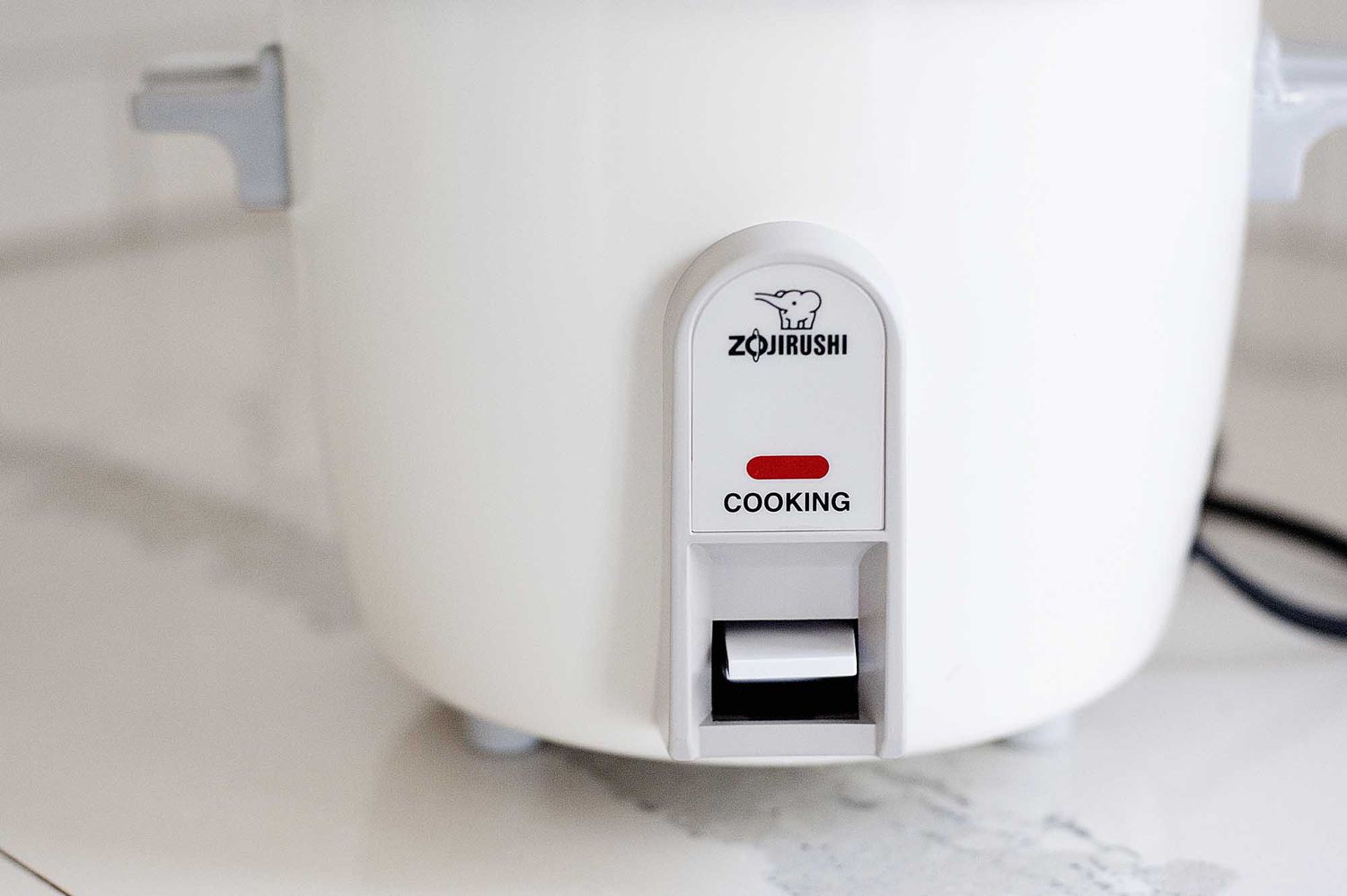
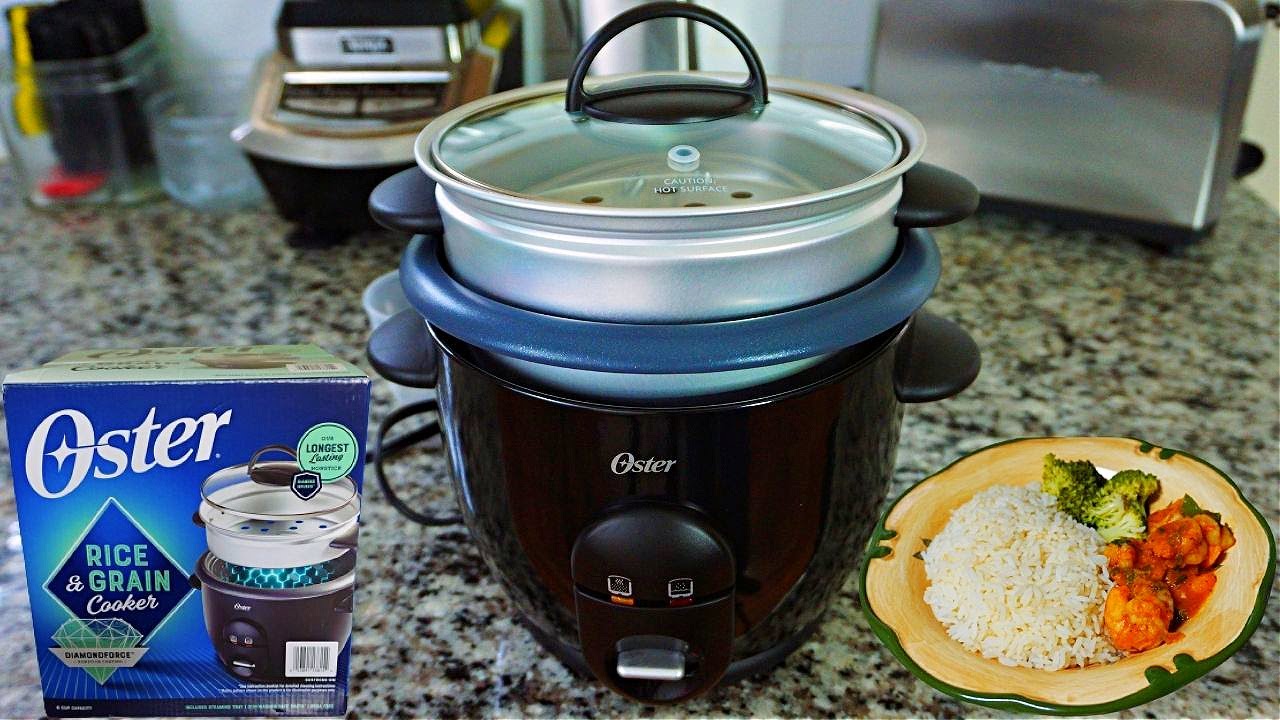
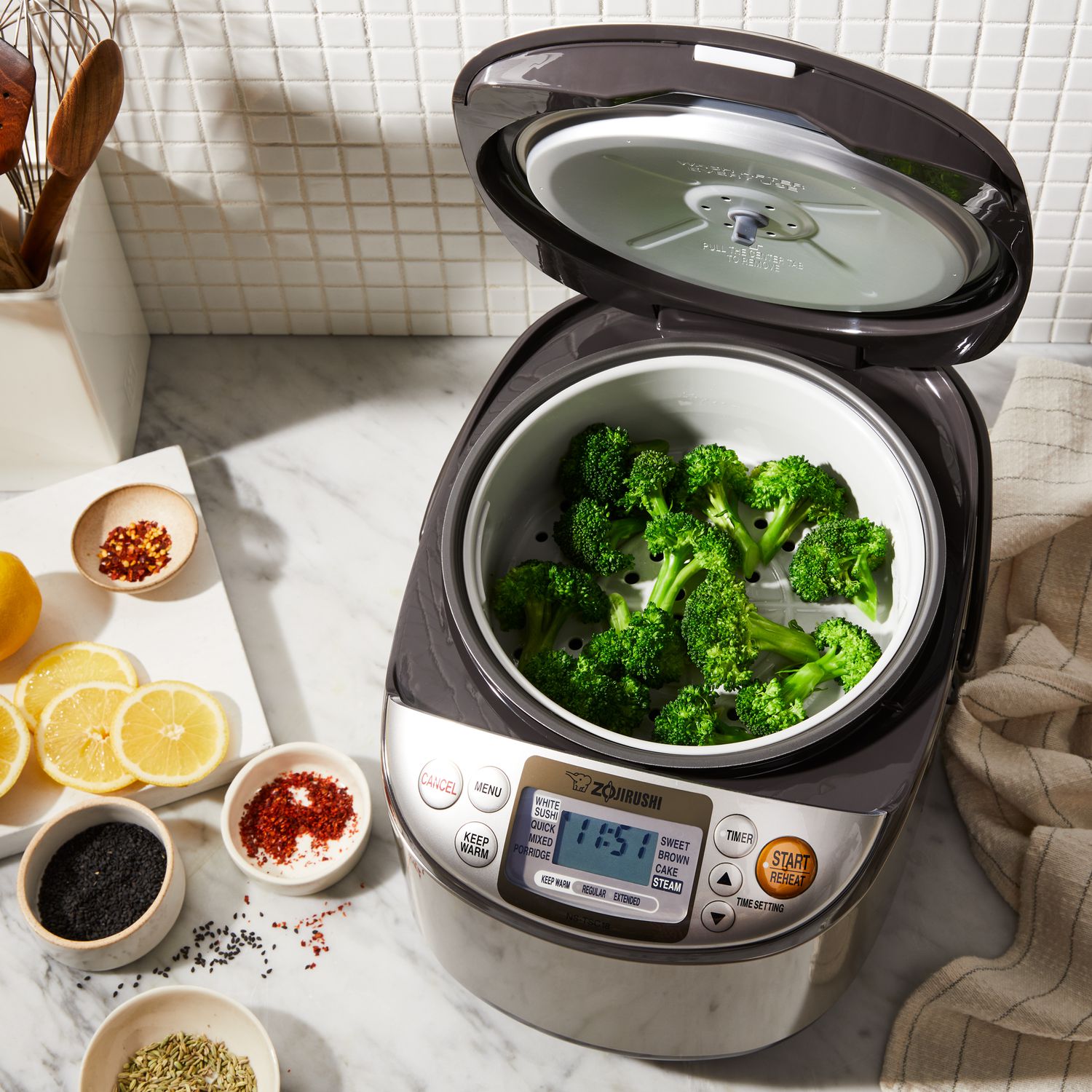
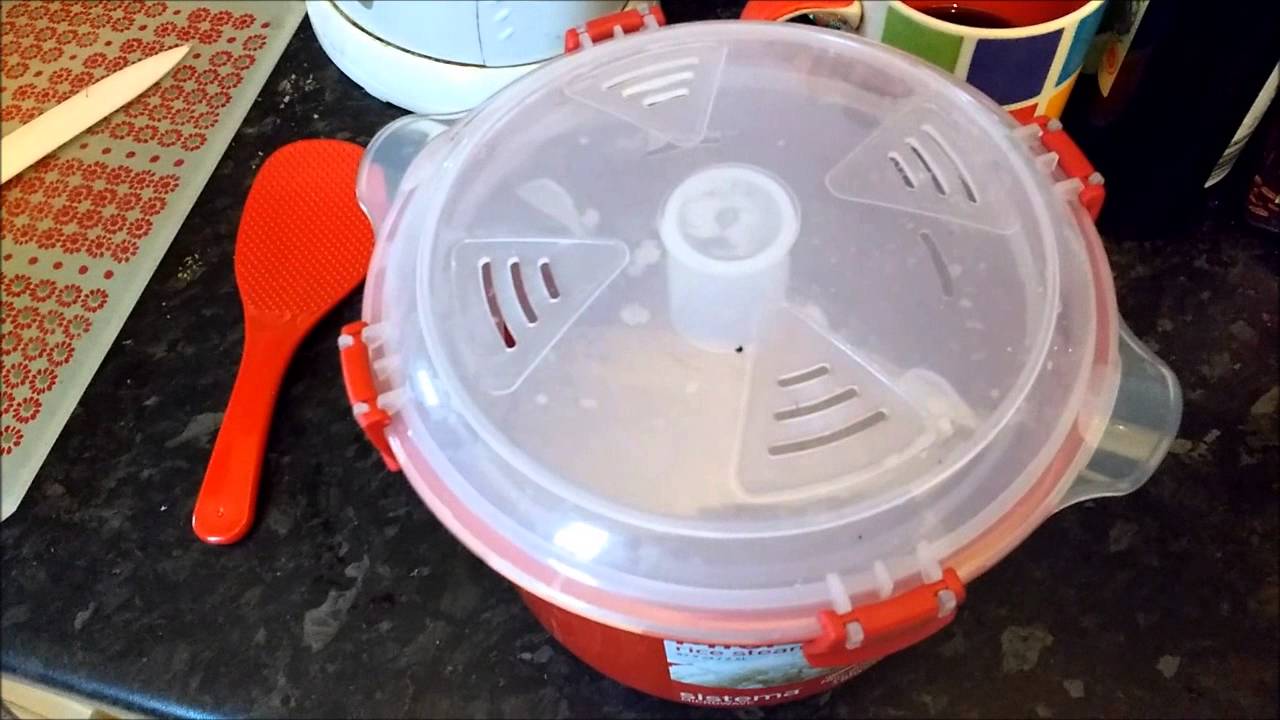
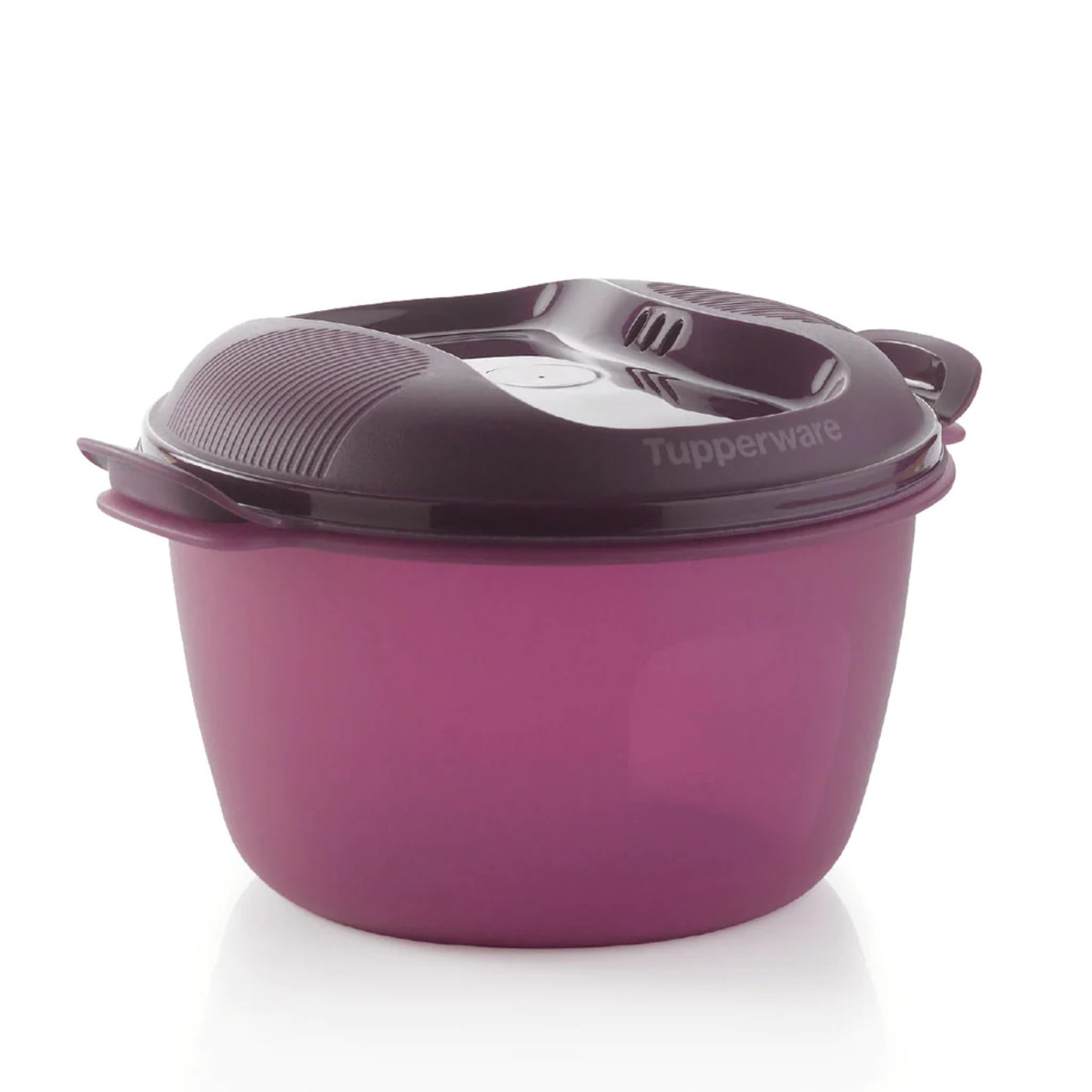
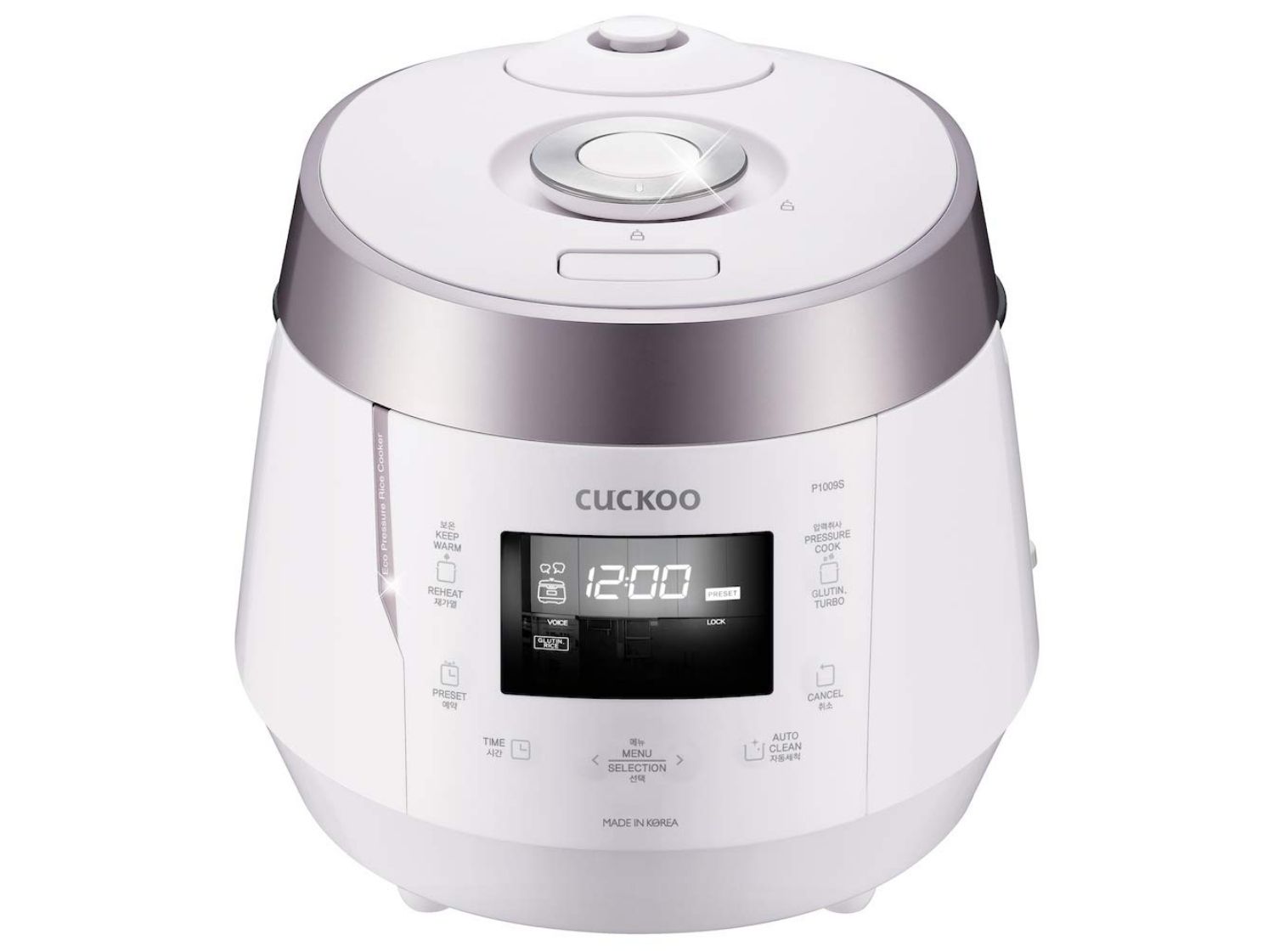
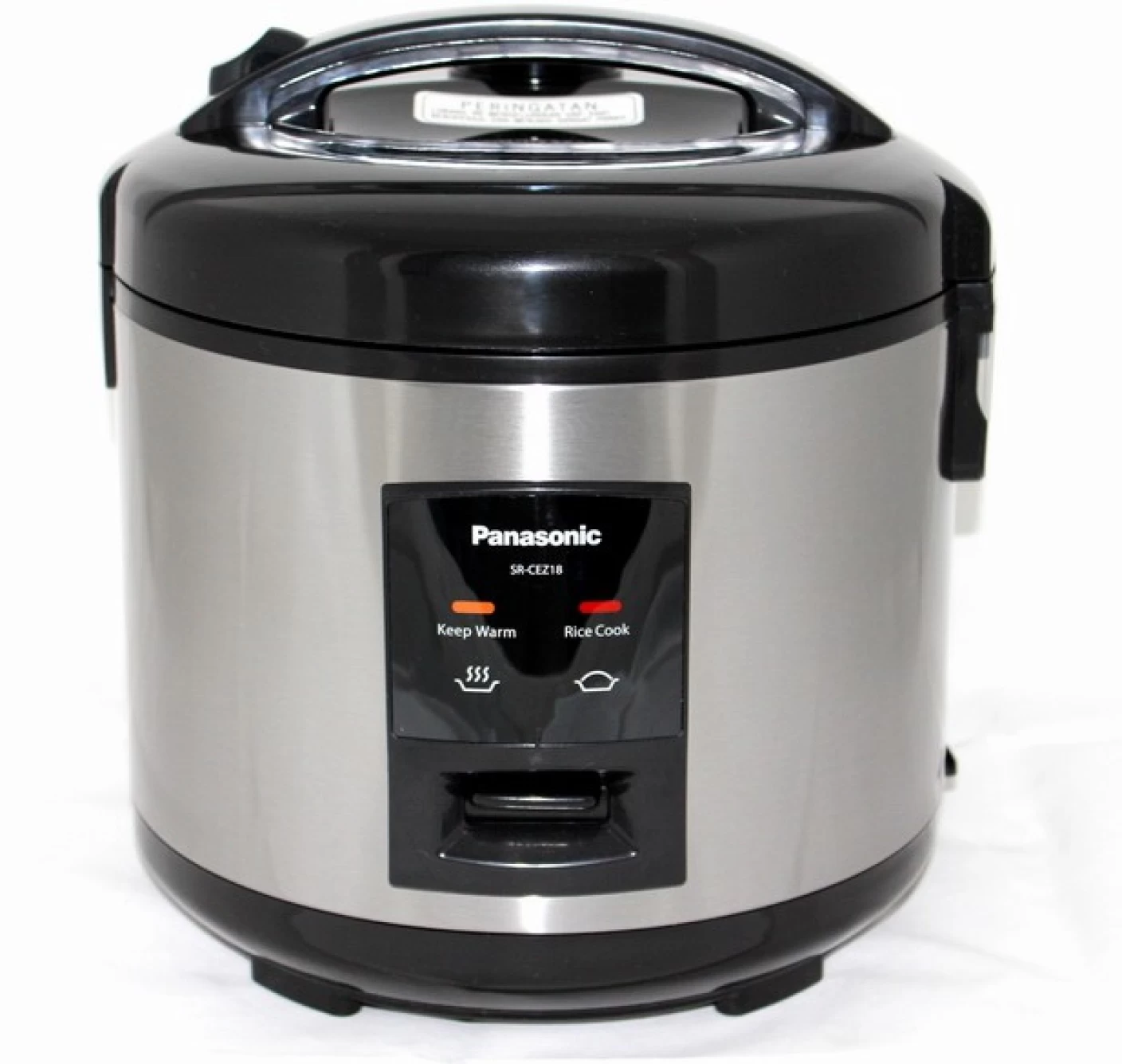
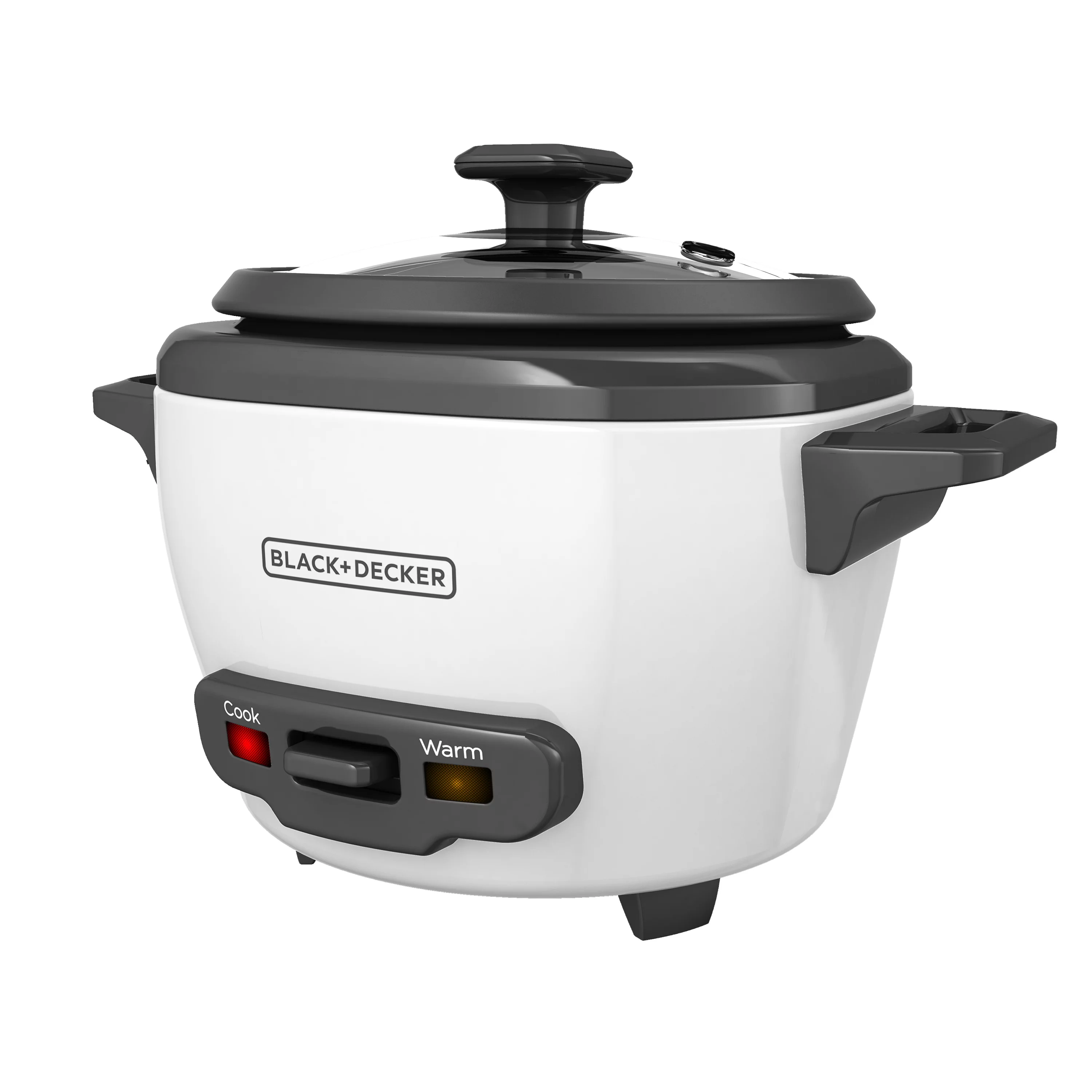
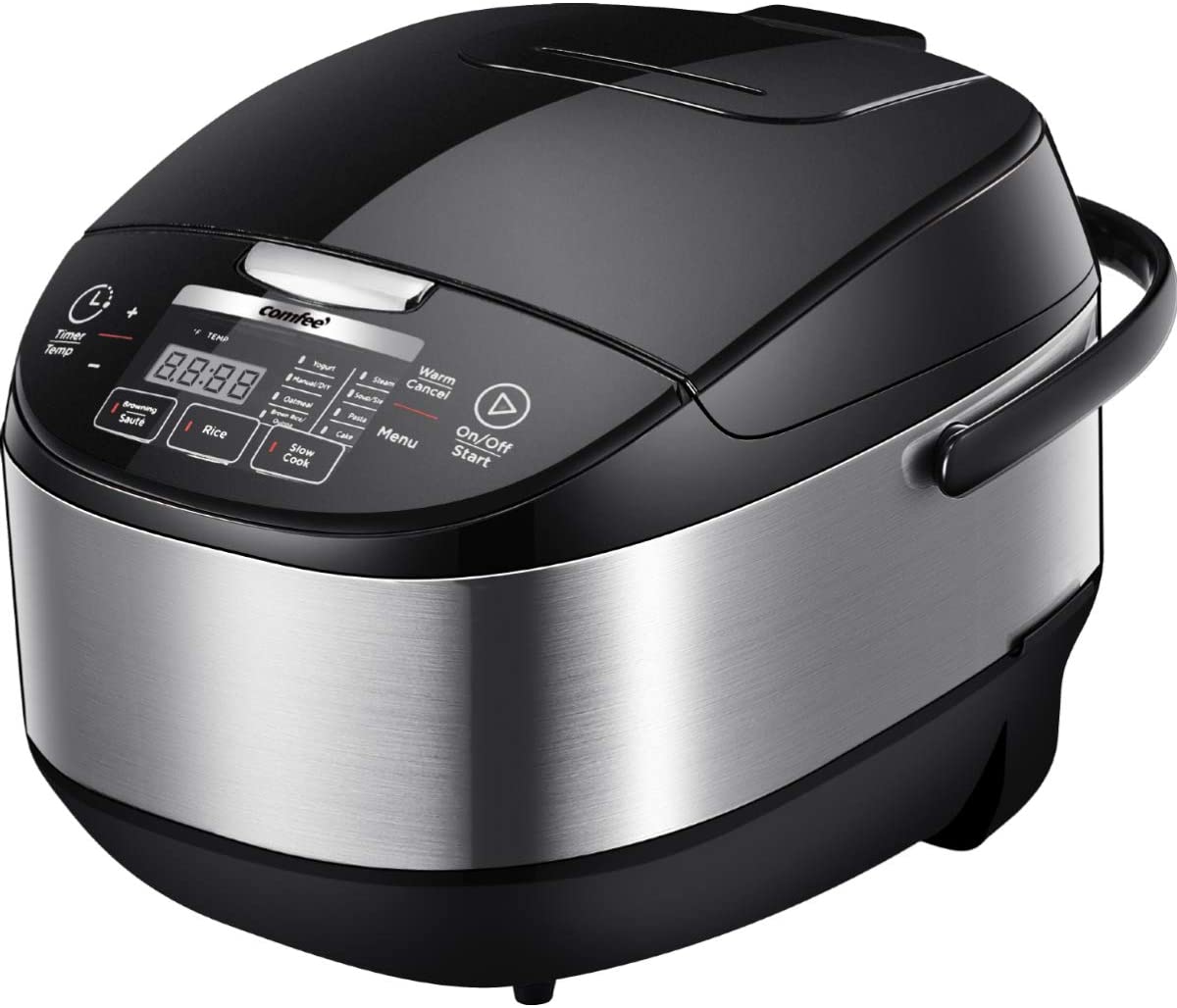
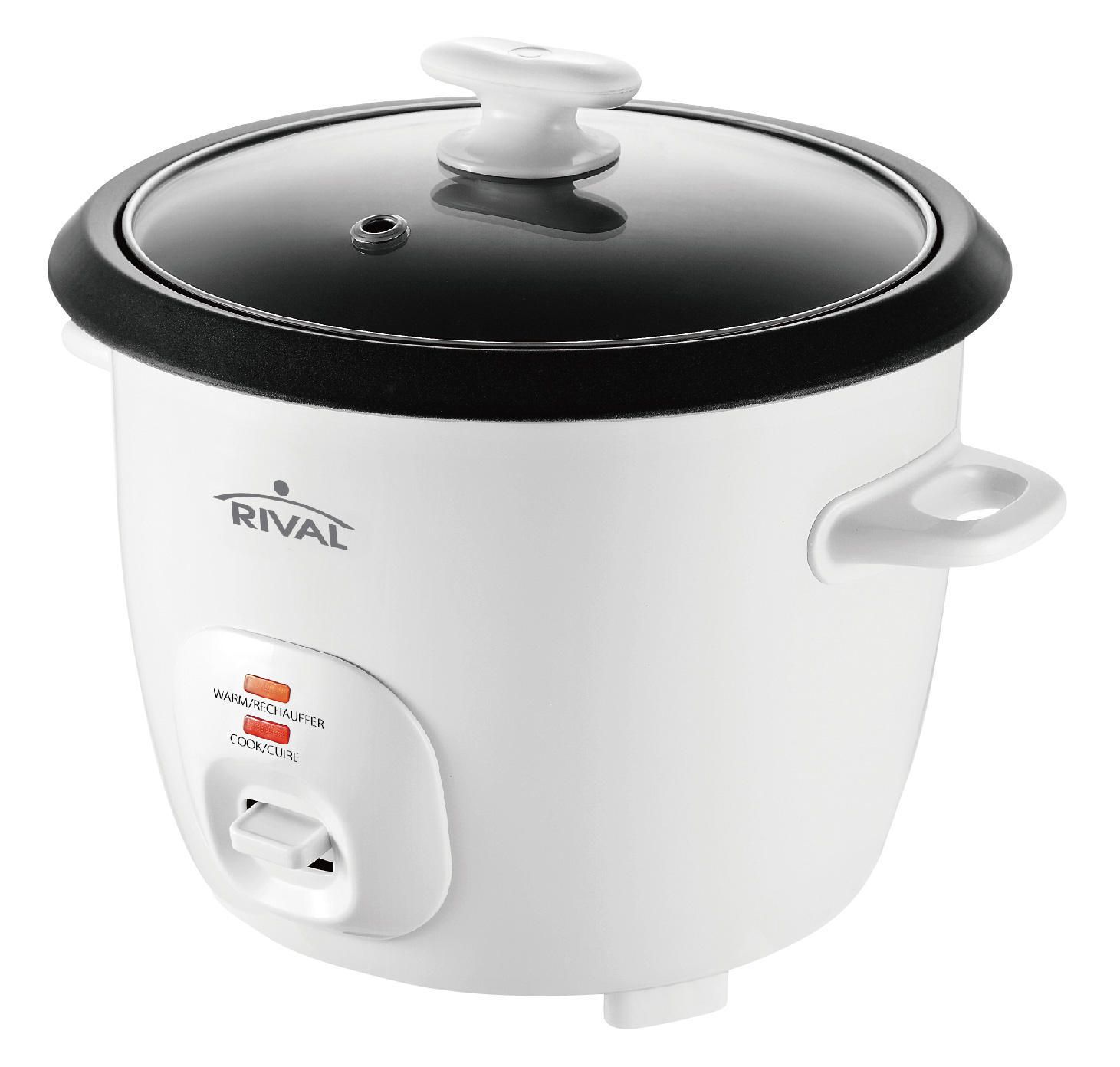
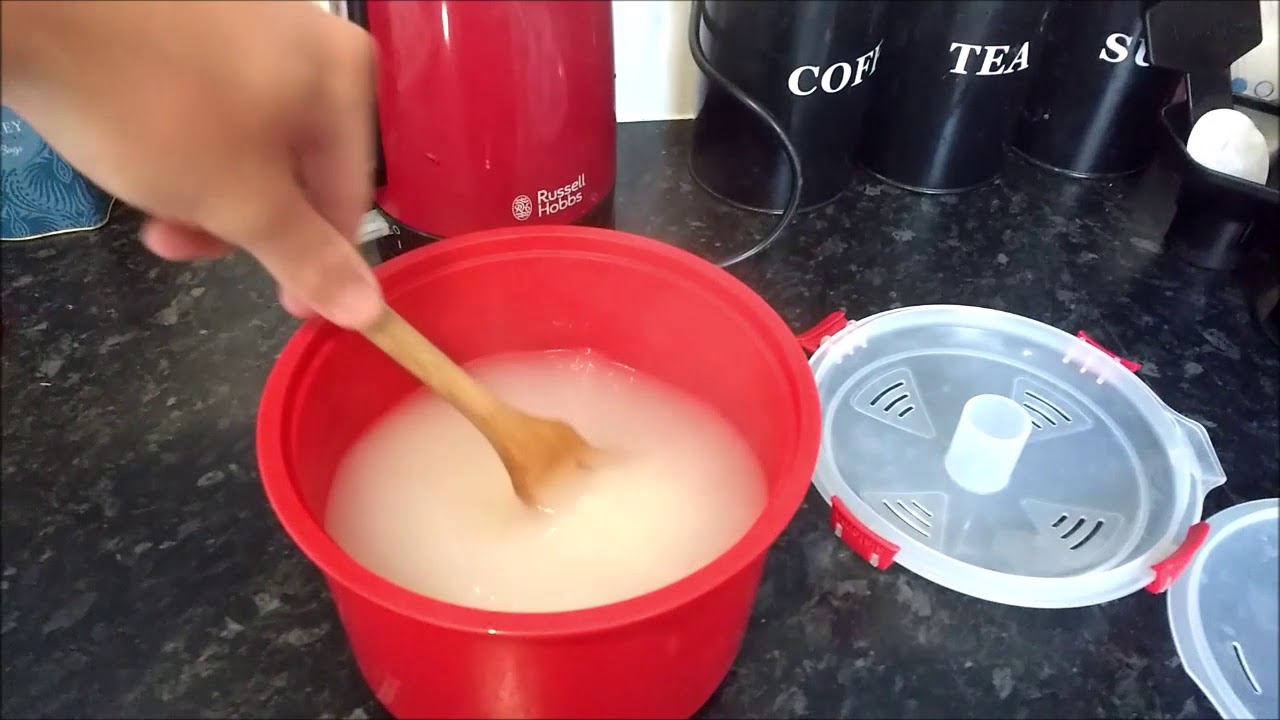

0 thoughts on “How To Use A Small Rice Cooker”